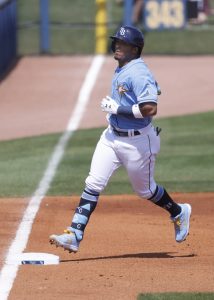Rays right-hander Chaz Roe has undergone surgery to correct a posterior labrum tear in his throwing shoulder, the team announced. The procedure will end Roe’s 2021 campaign, as manager Kevin Cash told Marc Topkin of the Tampa Bay Times and other reporters that the aim is to have the righty back in action for 2022.
Roe tossed only two-thirds of an inning in a single appearance for Tampa this season, before suffering a shoulder strain and then biceps tendinitis. It marks the second straight abbreviated season for Roe, since elbow soreness limited him to 10 games and 9 1/3 innings.
Despite that injury, the Rays brought Roe back on a one-year, $1.15MM free agent contract that unfortunately is now a wash. It wouldn’t be surprising to see Roe return for what would be a sixth season in Tampa Bay, however, if the club re-signed him on a minor league deal this winter.
Initially acquired from the Braves back in July 2017, Roe has posted some solid numbers for the Rays, including a 3.82 ERA over 101 1/3 relief innings in 2018-19. That roughly matches the 3.89 ERA posted by the 34-year-old over parts of nine MLB seasons for five different teams. While walks have been something of a nagging issue throughout Roe’s career, he has balanced those free passes with a good amount of missed bats (26.4% strikeout rate) and he has done a solid job of keeping the ball on the ground (48.9% grounder rate).

 Franco, 20, is seen by public prospect rankers as a transcendent talent.
Franco, 20, is seen by public prospect rankers as a transcendent talent.